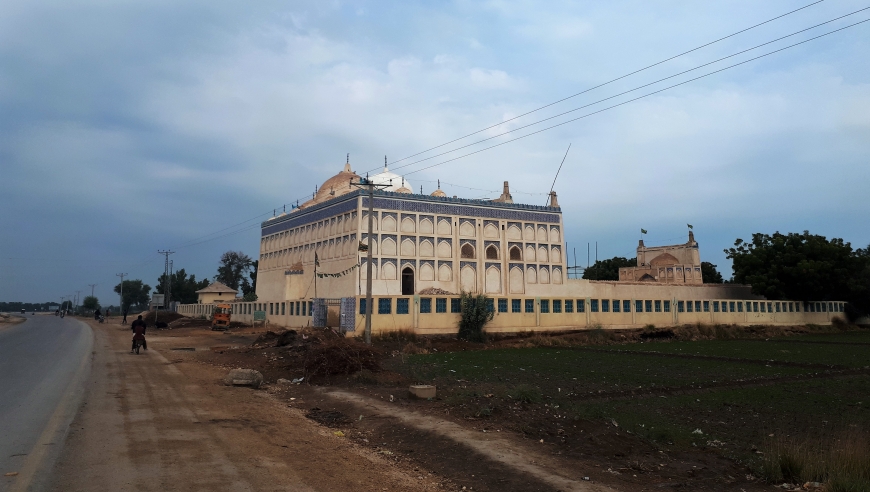
The Khudabad, once the capital of Sindh during Kalhora reign, is located in between the town of Sehwan and Dadu about 11 km south of the district headquarter of Dadu. In the centre of the old town, stands the great massive jamia Masjid (1710 AD) locally known as Khudabad mosque. The same has been lavishly adorned with enameled tiles. On either side of the entrance of the mosque is a beautiful panel which is a best example of tiles documented in Sindh. The general run of floral patterns and geometrical forms have been applied as ornamentation. Mostly represents tall and graceful lily plants whose leaves, flowers and buds sprout from the central stem and fall over right and left in easy natural curves. The unique rare glazed tiles and fresco paintings has been considerably damaged due to passage of time.
The prayer chamber has been divided into two compartments. The eastern compartment, a roofless one, is a small hall. This hall seems to have a low flat roof, providing an access to the gallery achieved at the squinch level of the domed western compartment. Massive tiers supporting the elegant arches divide the western hall into three portions through arch bays, the central one is larger in size than the flanking one. Each portion has an sunken arched mihrab size niche in the western wall to maintain the symmetry of central mihrab.
Location
| Jāmia Masjid Khudābād |
| Khudaabad, Dadu District, Sindh, Pakistan |